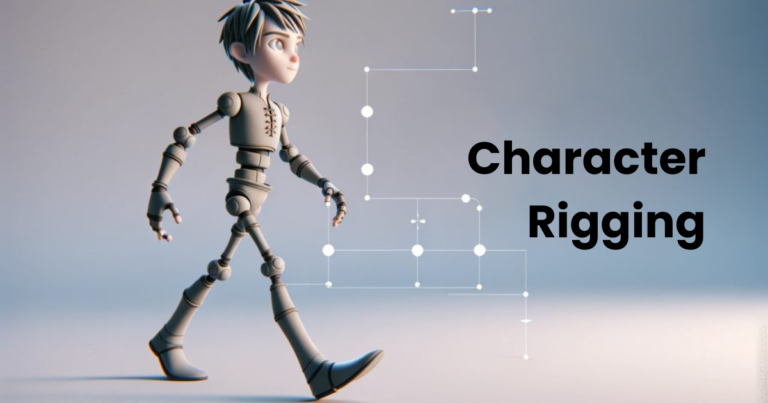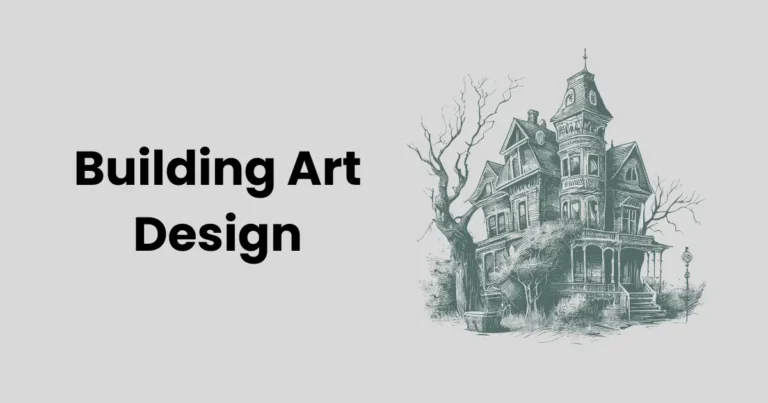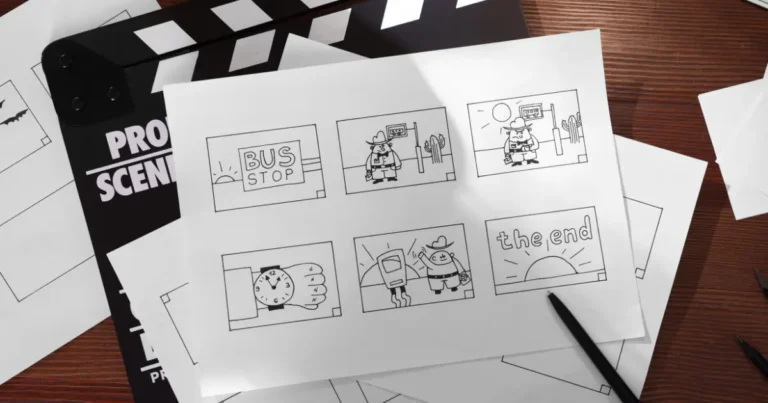Hand Painted Art Style – everything you need to know in 2025

Contents
The hand painted art style is a captivating approach to artistic expression that emphasizes craftsmanship, creativity, and individuality. It is characterized by meticulous brushstrokes, vibrant color palettes, and the organic imperfections that come from creating art by hand. Whether applied to traditional mediums like canvas and murals or reimagined in digital formats, this style offers a unique charm that sets it apart from other artistic methods.
In the world of visual arts, hand painted styles evoke a sense of authenticity and nostalgia, reminiscent of the tactile connection between the artist and their creation. This style is not only rooted in tradition but has also found its place in modern industries like video game design, animation, and illustration. Its adaptability has made it a preferred choice for projects seeking to convey warmth, personality, and originality.
The resurgence of the hand painted art style in digital media is a testament to its timeless appeal. By blending the intricacies of traditional painting techniques with the versatility of digital tools, artists today continue to explore and innovate within this artistic domain, making it as relevant now as it has ever been.
The Origins and History of Hand-Painted Art
The hand painted art style has a rich history that spans millennia, rooted in humanity’s earliest attempts to communicate, record, and express. It emerged as one of the most fundamental forms of visual expression, showcasing the artist’s direct connection to their medium. The evolution of this style reflects the cultural, technological, and creative advancements of societies throughout time.

Early Beginnings
Hand painted art style traces back to prehistoric times, with early humans creating cave paintings using natural pigments made from minerals, charcoal, and animal fats. These primitive artworks, found in places like Lascaux, France, and Altamira, Spain, depict animals, human figures, and abstract symbols, serving as records of daily life, rituals, and beliefs.
Classical and Ancient Civilizations
As civilizations advanced, hand painted art style became more sophisticated and symbolic. Ancient Egyptians used it to decorate tombs, temples, and papyrus scrolls, portraying gods, pharaohs, and daily life in a highly stylized manner. Similarly, in ancient Greece and Rome, frescoes and ceramics were hand-painted to narrate myths, celebrate victories, and adorn public and private spaces.
The Renaissance Era
The Renaissance marked a significant turning point for hand-painted art. Artists like Leonardo da Vinci and Michelangelo elevated the style through their mastery of perspective, anatomy, and color theory. Frescoes, oil paintings, and portraits became staples of artistic expression, reflecting the era’s focus on realism, humanism, and storytelling.
Traditional Eastern Art
In Asia, hand painted art style took distinct forms, such as Chinese ink wash paintings and Japanese ukiyo-e woodblock prints. These styles emphasized simplicity, harmony, and nature, reflecting cultural philosophies like Taoism and Zen Buddhism. Intricate hand-painted works also flourished in Indian miniature paintings, often depicting epic tales from mythology.
Hand Painted Art style in Folk Traditions
Folk art traditions worldwide embraced hand-painting as a means to preserve cultural heritage. Examples include Mexican Talavera pottery, Ukrainian pysanka eggs, and Scandinavian rosemaling. These colorful, pattern-rich styles celebrated local stories, customs, and craftsmanship.
The Transition to Modern Art
With the advent of the Industrial Revolution, traditional hand-painting saw a decline in mass production. However, it found new life in fine art movements such as Impressionism and Expressionism, where artists like Claude Monet and Vincent van Gogh celebrated the texture and emotional resonance of brushstrokes.
Hand Painted Art Style in the Digital Age
In the 21st century, the hand-painted style has transitioned seamlessly into digital platforms. Artists use digital tools to replicate the textures and imperfections of traditional techniques, keeping the style alive in video games, animations, and design. Games like Cuphead and animated films like The Tale of the Princess Kaguya exemplify the successful fusion of hand-painted aesthetics with modern storytelling.
Advantages of Using Hand Painted Art in Digital Media
The integration of hand painted art into digital media brings together the best of both worlds—traditional artistic techniques and modern technology. While digital tools offer precise control, the unique qualities of hand-painted art can elevate digital projects, making them more expressive, authentic, and visually compelling. Below are the key advantages of using hand-painted art in digital media:

1. Timeless Aesthetic
Hand painted art style carries a timeless aesthetic that appeals to a wide audience. Whether used in games, animations, or illustrations, this style evokes a sense of nostalgia and warmth that is often missing from purely digital or computer-generated art. Its organic qualities—such as visible brushstrokes, texture, and imperfections—create an inviting and emotional connection with the viewer, making it stand out against other more polished, digital styles. The timelessness of hand painted art style makes it a versatile choice for projects that aim to maintain a classic or timeless appeal.
2. Enhanced Emotional Impact
Hand painted art style has an emotional depth that is often associated with the human touch. In digital media, where highly polished, precise visuals are common, hand painted art style stands out for its ability to evoke deeper emotions. The imperfect brushstrokes and textures add a level of authenticity, giving the piece a personal and intimate feel. This human element can resonate more powerfully with the audience, evoking feelings of warmth, nostalgia, or even melancholy—qualities that are often harder to achieve with sleek, digital-only art styles.
3. Unique Visual Identity
One of the most significant advantages of hand painted art is its ability to create a unique visual identity. In a sea of digital content, hand-painted elements stand out due to their distinct look and feel. The individuality of each brushstroke, the unpredictable blending of colors, and the layering of textures all combine to produce a one-of-a-kind piece. For businesses, creators, or studios looking to differentiate their brand or project, hand painted art offers a way to stand out and create a memorable visual style that is both recognizable and unique.
4. Versatility in Various Digital Formats
Hand painted art style is highly versatile and can be used in a variety of digital mediums. It works well across multiple platforms, including:
- Video Games: The hand-painted style adds texture and character to environments, characters, and objects, as seen in games like Cuphead or Hollow Knight.
- Animations: Hand-painted backgrounds and frames enhance the overall visual appeal of animated films and shows, adding an element of traditional craftsmanship to digital animation.
- Illustrations: Whether for websites, books, or marketing materials, hand-painted illustrations can be digitally integrated into any design, offering a more personal touch than vector-based graphics.
5. Combines Traditional Craftsmanship with Modern Technology
Using hand painted art style in digital media allows creators to blend traditional craftsmanship with modern technology. Artists can use digital tools to replicate the tactile feel of traditional media, like oils, watercolors, or gouache, while maintaining the flexibility and efficiency that digital platforms provide. Software like Photoshop, Procreate, and Krita offers brushes that emulate the look and feel of real paint, allowing artists to incorporate techniques such as layering, glazing, and blending—all while taking advantage of the digital medium’s ability to easily edit and refine the work.
Tools and Techniques for Creating Hand-Painted Art
Creating hand painted art requires a combination of traditional artistic tools and techniques, as well as modern digital tools that replicate the tactile feel of real painting. The following outlines both the traditional and digital tools and techniques artists can use to achieve a hand-painted look in their artwork.

Traditional Tools and Techniques
1. Brushes and Palette Knive
In traditional hand-painting, brushes are the most essential tools for applying paint to a surface. The type of brush used depends on the medium and desired effect:
- Flat brushes are great for broad strokes and filling large areas.
- Round brushes are perfect for fine details, lines, and controlled strokes.
- Filbert brushes, which are rounded at the tip, are great for blending and softer strokes.
Palette knives are also useful for mixing paints and creating texture on the canvas. They can be used to scrape paint, add thick layers, or create sharp lines and edges.
2. Paints (Acrylic, Oil, Watercolor, Gouache, etc.
The choice of paint medium determines much of the final look and feel of a hand-painted piece. Some popular types of paints include:
- Acrylic Paints: Known for their fast-drying properties, acrylic paints are versatile and can be used for a wide range of styles. They work well on both canvas and paper and can mimic the look of oil paints if desired.
- Oil Paints: Oil paints are traditional and offer rich colors and smooth blending. They have a longer drying time, which gives artists the ability to work and adjust their strokes over time.
- Watercolors: Watercolors are translucent, allowing for delicate layering and soft blending effects. They are often used for more subtle, atmospheric paintings.
- Gouache: A type of watercolor that is more opaque, gouache allows for vibrant, solid colors with a matte finish, making it a popular choice for illustrations and animations.
3. Canvas or Pape
The surface on which you paint plays a significant role in the texture and outcome of your work.
- Canvas is the most traditional surface for oil and acrylic painting. Its rough texture allows for a variety of brushstroke techniques and adds dimension to the painting.
- Watercolor paper is textured to hold water-based paints and prevent warping.
- Wood panels or masonite boards are also used by artists who prefer a smoother, more durable surface.
4. Mediums for Texture and Effect
Artists often use various mediums to alter the consistency, texture, and drying time of paints.
- Gesso: A primer that prepares the surface for painting by creating a smooth base for acrylics and oils. It can also be used to add texture to the painting surface.
- Glazing mediums: Used in oil painting to add transparency and create depth.
- Retarder: A medium that slows the drying time of acrylic paints, giving artists more time to blend colors and achieve smooth transitions.
Digital Tools and Techniques
1. Digital Bruhe
In digital art, programs like Adobe Photoshop, Procreate, and Krita offer an array of digital brushes designed to replicate traditional painting techniques. These brushes are customizable and can simulate various textures and effects, such as:

- Oil brushes for rich, blended strokes.
- Watercolor brushes that simulate the soft blending and layering effects of watercolor paints.
- Textured brushes that mimic the brushstroke and graininess of real paint.
- Charcoal or pastel brushes for creating rough, sketch-like textures.
Digital brushes can be adjusted for opacity, flow, and pressure sensitivity, allowing artists to recreate the physical feel of traditional painting in a digital environment.
2. Tablets and Stylu
To create a hand-painted effect digitally, artists often use drawing tablets and stylus pens, such as those from Wacom, Huion, or XP-Pen. These tools offer high pressure sensitivity and allow for fluid, natural strokes. The stylus provides precise control, and pressure sensitivity lets the artist vary the opacity, thickness, and intensity of each brushstroke, much like using a traditional paintbrush.
3. Layering and Blending in Digital Medi
Much like in traditional painting, layering is an essential technique for creating depth and texture in digital hand-painted art.
- Layering: Digital artists can work in layers, adding different elements to the artwork (such as background, details, and lighting) without affecting other parts of the composition.
- Blending modes: Digital painting software has specific blending modes (like Multiply, Overlay, and Screen) that allow artists to seamlessly mix colors, textures, and shadows to create depth and dimension in the artwork.
4. Texture Brushes and Custom Texture
Digital artists often use texture brushes to replicate the physical texture of hand-painted art. These brushes add graininess, roughness, or depth to the image, making it appear more tactile. Additionally, custom textures can be applied to simulate things like canvas, brushstroke patterns, or watercolor paper, enhancing the hand-painted look of the digital piece.
5. Color Adjustments and Filter
In digital painting, artists have the ability to make color adjustments with tools like hue/saturation, contrast, and brightness. These adjustments help achieve a more natural, hand-painted effect by altering the color palette to match the artist’s desired aesthetic. Filters such as noise, grain, and blur can also be used to simulate the imperfections and organic quality of traditional hand-painted art.
Hand-Painted Art in Different Industries
Hand painted art style has a timeless and unique appeal that transcends various industries. Its ability to convey emotion, authenticity, and craftsmanship makes it a valuable asset in fields ranging from entertainment to advertising. Here’s a look at how hand painted art style is used across different sectors and the distinctive benefits it brings to each.

1. Video Games
Hand painted art style has found a significant place in the video game industry, where it’s often used to create immersive environments and stylized characters. The unique texture, depth, and emotional connection associated with hand-painted visuals make them especially popular in indie games and titles that emphasize artistic expression over photorealism.
Applications:
- Backgrounds and Environments: Hand-painted backdrops and environments, such as those seen in games like Hollow Knight or Cuphead, offer a vibrant and artistic approach to world-building. These painted scenes create a distinctive atmosphere that digital models and textures cannot replicate, adding richness and personality to the game’s world.
- Character Design: Characters in hand-painted games are often designed with unique, expressive features. The brushstroke details give characters a more organic and emotionally resonant feel compared to the more typical, crisp, and smooth characters created with 3D models.
- Art Style: Games that embrace a hand painted art style often do so to distinguish themselves in the crowded market. The style can evoke nostalgia or a sense of craftsmanship that resonates with players looking for something different from the high-tech, photorealistic visuals common in AAA games.
2. Animation
Hand painted art has played a foundational role in traditional animation and continues to inspire modern animated works. Even with the rise of 3D animation, hand-painted techniques are still valued for their aesthetic and emotional depth.
Applications:
- Backgrounds: In traditional animation, backgrounds were often painted by hand on large canvases and then photographed as part of the animation process. Today, hand-painted backgrounds continue to be used to evoke a sense of artistry and craftsmanship. Movies like The Secret of Kells and Song of the Sea feature hand-painted animation techniques that help deliver a unique visual experience.
- Hand-Drawn Animation: Some studios are reviving hand-drawn, 2D animation with hand-painted backgrounds or fully hand-painted frames. This allows the animation to retain its hand-crafted charm while offering a vibrant, visually stunning quality that’s difficult to achieve with digital techniques alone.
3. Illustration and Publishing
The publishing industry—including books, magazines, and advertising—often uses hand painted art for its unique appeal, which can capture attention more effectively than digital art or photography. It conveys a sense of authenticity and creativity that resonates with audiences.
Applications:
- Book Covers: Hand-painted illustrations for book covers, especially for children’s literature and fantasy genres, are prized for their ability to transport readers into the world of the book. The whimsical, imaginative quality of hand painted art can create an inviting and magical first impression of a story.
- Magazine and Editorial Illustrations: Hand-painted illustrations in editorial spreads can evoke emotions or convey complex ideas in an easily digestible format. The organic nature of the artwork makes it especially effective for creating illustrations with a sense of narrative or depth.
- Packaging Design: Companies that produce high-end or artisanal products often use hand-painted designs for product packaging to emphasize quality and craftsmanship. Hand-painted labels, bottles, and boxes give a sense of individuality and exclusivity to the product.
4. Fashion and Apparel
In the fashion industry, hand painted art style can add a layer of creativity and individuality to designs. From clothing to accessories, hand-painted elements allow designers to create one-of-a-kind pieces with an artistic flair.
Applications:
- Custom Apparel: Designers and independent artists use hand-painted techniques to create unique, wearable art. Hand-painted denim jackets, sneakers, and t-shirts can be customized to match personal styles or brand identities. This trend has been embraced by fashion-forward brands and independent creators alike.
- Textile Design: Hand-painted motifs and patterns are used in textile design, particularly in high-end fashion and bespoke collections. These intricate designs are applied to fabrics, creating garments that stand out for their artistic craftsmanship.
- Fashion Illustrations: Fashion illustrations, often hand-painted, continue to play an important role in the industry. These artworks can be used for advertising campaigns, lookbooks, or runway show promotions, offering a distinctive artistic interpretation of collections.
5. Advertising and Branding
In advertising and branding, hand painted art style can convey a sense of authenticity, warmth, and artistry that digital designs may lack. Brands seeking to evoke a unique, creative, or nostalgic feeling often turn to hand-painted elements for their marketing materials.
Applications:
- Logo Design: Some brands incorporate hand-painted elements into their logos to add personality and uniqueness. Hand-lettered fonts and brushstroke logos can convey a sense of craftsmanship, making the brand feel more personal and approachable.
- Ad Campaigns: Hand painted art style is often used in advertisements, particularly for companies looking to project a creative, authentic, or artisanal brand image. By using painted visuals, businesses can evoke emotions that resonate with customers, especially in industries like food, home décor, and lifestyle products.
- Murals and Billboards: Large-scale murals and hand-painted billboards are eye-catching, memorable, and can effectively convey a brand’s identity or message. This traditional form of advertising stands out in urban settings and attracts attention in ways that digital billboards may not.
Conclusion
Hand painted art style remains a timeless and influential medium that bridges the gap between tradition and modern innovation. From the iconic works of historical figures like Leonardo da Vinci and Vincent van Gogh to contemporary digital artists such as Loish and Bastien Grivet, hand-painted techniques continue to inspire and shape the visual language of various industries.
Whether it’s the expressive brushstrokes of classical masterpieces, the bold colors and textures of modern abstract works, or the nostalgic charm of hand-painted illustrations in video games and animation, this art form holds a unique power to evoke emotion, tell stories, and create lasting impressions.
By looking back at the great artists and cultural movements that have shaped the hand-painted style, we can see how their legacies continue to inspire modern creators. In a world dominated by digital tools and fast-paced innovation, hand painted art offers a breath of fresh air, reminding us of the beauty, craftsmanship, and emotional depth that only human hands can create.






